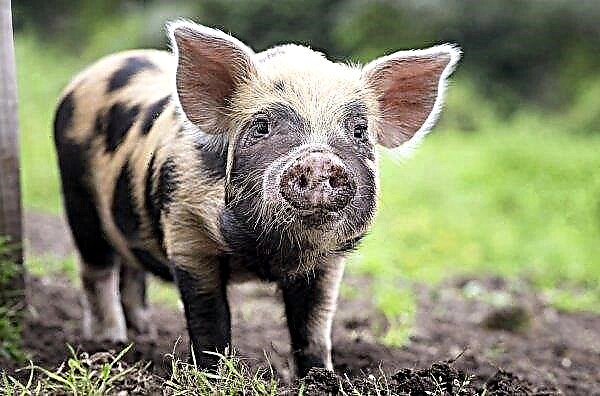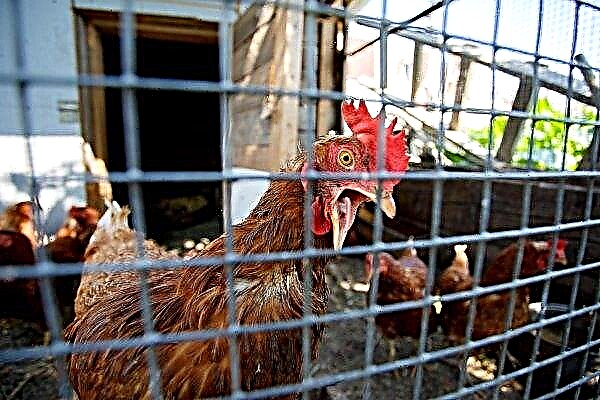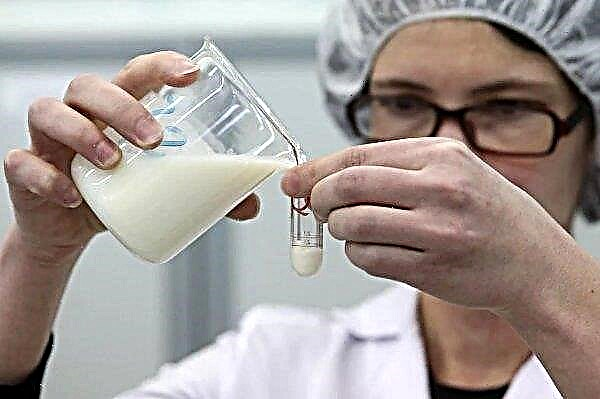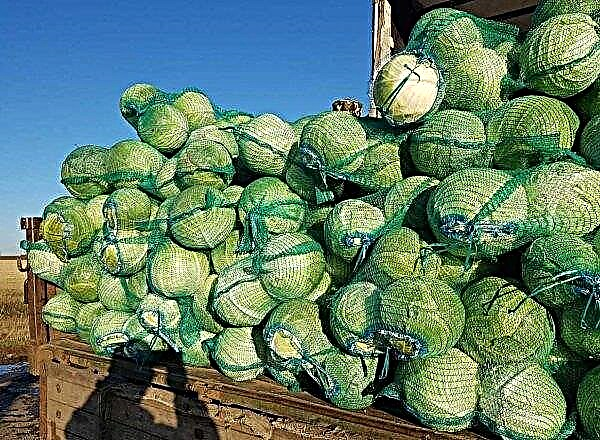High popularity on cucumbers forces breeders to conduct continuous work on the cultivation of new varieties and improvement of old ones. Today we will talk about one long-known, but very common variety of Phoenix cucumbers, improved to meet the needs of the consumer.
Description and characteristics of the variety
The history of the Phoenix variety began in the last years of the Soviet Union. Initially, it appeared as the Phoenix 640, but the people did not like the number prefix in the name and they simply called it Phoenix. Breeders worked hard.
The culture turned out to be universal and resistant to a number of diseases, which is why it came to popularity in just a year, although the variety was late-ripening (55–65 days). Later, a hybrid was developed on the basis of the Phoenix, which received the prefix "f1" in the name.
A little later Phoenix plus appeared. These last two hybrids turned out to be mid-season (42–45 days). Otherwise, all varieties of the variety are almost identical. Their bushes are indeterminate, medium-sized, covered with small bright green leaves. They grow to 2.5–3 m. There are many lateral shoots, but on the whole they do not thicken the bush, which allows air to pass between them freely. Flowering in them is of a mixed type and without pollination by insects the ovary does not form. The fruits are oval-cylindrical. In Phoenix, their length is 15-16 cm, in Phoenix plus a little less, 10-12 cm.
There are many lateral shoots, but on the whole they do not thicken the bush, which allows air to pass between them freely. Flowering in them is of a mixed type and without pollination by insects the ovary does not form. The fruits are oval-cylindrical. In Phoenix, their length is 15-16 cm, in Phoenix plus a little less, 10-12 cm.
The skin is dense, dark green, with spikes. The Phoenix has light bands more pronounced than the Phoenix plus. The latter is genetically based on the absence of bitterness, even if irrigation rules are not followed.
Did you know? At the end of the 20th century, a downy mildew virus raged in Europe, destroying the entire crop of cucumbers. Affected the disease and the territory of the USSR. Therefore, the task of Soviet breeders was to develop a variety resistant to a mutated illness. So in the 90s the Phoenix variety appeared.
Advantages and disadvantages
- Among the advantages that distinguish these three varieties from the rest of the varieties, it can be noted:
- universality;
- presentation does not lose within 15 days;
- unpretentious;
- resistant to drought, peronosporosis and other diseases;
- long fruiting period;
- excellent taste;
- high productivity;
- tolerates transportation well.
- There are few negative qualities:
- since the variety is bee pollinated, not suitable for greenhouses;
- zoned (not in every region it can be grown);
- productivity directly depends on the number of sunny days.

How much yield
It was noted that Phoenix is a high-yielding variety. For a better understanding, we give the data in numbers. From 1 m² you can collect 5 kg of greenery. About 90% of the crop is suitable for transportation and sale.
Optimal landing times
Sowing seeds on the garden can be done when the threat of frost is over and the soil warms up to + 13 ... + 15 ° С. Usually this is the end of May - the beginning of June. Sowing seedlings is carried out in early May.
Methods for planting and growing cucumbers
Phoenix responds equally well to planting seeds and seedlings. Which way to choose depends on your climate region.
Rodnichok is also referred to bee pollinated varieties of cucumbers.
Seedling method
Seedling method, although more troublesome, but it allows you to grow a culture in cold climatic zones.
Soil requirements and tank sizes
For growing seedlings, you can use individual cups or seedling boxes with cells. They are filled with nutritious loose soil. A mixture of garden soil with humus is quite suitable. The earth must be warm, because in a cold seed it can begin to rot. Before sowing, the soil is disinfected with potassium permanganate and watered with warm, settled water. It is advisable to perform the described procedures a month before sowing.
Before sowing, the soil is disinfected with potassium permanganate and watered with warm, settled water. It is advisable to perform the described procedures a month before sowing.
Preparation and technology for sowing seeds
Before planting, seed must be processed. First, it is laid out on wet gauze and wrapped in a bundle, it is sent to the refrigerator for three days. After leaving for several days at room temperature. Finally, disinfection is performed.
A nodule with seeds is immersed for a quarter of an hour in a weak solution of potassium permanganate. The finished seed is buried in the soil by 10-15 mm. Topped with soil. In one hole you need to put 2-3 seeds. The container is covered with a film and placed in a warm dark place.
Seedling Care
Crops are watered as the soil dries. With the advent of the first seedlings, the seedlings are opened and transferred to a bright, cooler place with a temperature of + 15 ° С. After the first leaves appear, a pick is carried out.
Planting seedlings in a permanent place
Seedlings are planted on the bed at the age of one month. By this time, she should have 3-4 real leaflets. Within a week, seedlings begin to harden, taking them out for several hours. You can also treat the seedlings with growth stimulants.
Young plants are planted in the ground at a distance of 8–13 cm from each other. Between the rows you need to retreat 40-50 cm.
Important! The first week and a half after planting, seedlings are preferably slightly shaded.
Reckless way
Cucumbers are a photophilous culture. They need to be planted in a place where there is a lot of sunlight and there are no drafts. The soil on the bed should be fertile, loose and not excessively moist. Its acidity is desirable at pH 7, not higher. If the soil is acidified, then liming should be carried out in autumn.
Before planting, the soil is fertilized. Humus or manure is introduced (2-3 kg per 1 m²). Also, the garden bed is cleaned of vegetable litter and dug.
When the time comes, the seeds are planted to a depth of 10-15 mm at a distance of 8-13 cm. A couple of seeds are put in the hole. With the advent of seedlings, the bed is thinned out. On 1 m², 2-3 seedlings are left. Between the rows should be 35–45 cm.
How to care for cucumbers in the open ground
Young plants, whether they are planted with seedlings on a bed or sprouted from a sown seed, at first need careful care. Without proper attention and care, they will not be able to get stronger. All actions are very simple and do not take a lot of time. We will describe them below.
Watering and feeding
Moisture is the key to the formation of beautiful and juicy greens, so you need to pay special attention to watering. For irrigation should use warm water. On 1 m² of bed it is necessary to pour 35–45 liters of water. It is enough to water the plants once a day, in the evening, but if it is dry and hot, then you need to water twice.
In cloudy and cool weather, the volume of fluid poured under the bush needs to be reduced.
Important! Cucumbers do not like when moisture falls on their leaves, so it is better to use a drip irrigation system.
Do not interfere with the plant and top dressing. They will help to quickly form and fill the fruits. Organic and mineral fertilizers are applicable. They are applied three times during the growing season: immediately after planting or seedlings, three weeks later and before flowering begins. You can use stimulants such as "Impulse" or "Ovary." They will provoke a more abundant flowering, which means there will be more ovaries.
How to form and tie a bush
In order not to have empty flowers on the bush, it is necessary to carry out its formation. Pinching of the main stem is performed after the formation of 5-6 true leaves. On the lateral shoots after the formation of the second ovary, pinching of the apex is also performed.
Tall bushes of the Phoenix need to be backed up. They bear fruit well and when lying down, but if they are put into operation on a support, the harvest will be easier to harvest, fewer diseases and pests will attack it, and it is much easier to take care of such a bed. Usually such tall bushes are tied to a trellis.
Soil care
After watering and rainfall, the top layer of soil around the bushes needs to be loosened. Loosening should be very careful, since the roots of cucumbers are very delicate and are located close to the surface.
Weed weeding should be done regularly. Departure of the garden will have an extremely negative effect on the crop, as the crop reacts poorly to the weed neighborhood.
Did you know? In the city of Lukhovitsy (Moscow region), a monument to the cucumber-breadwinner was erected. On a huge wooden barrel zelenets flaunts, looking tail into the sky.
Grade Diseases and Pests
The Phoenix variety was bred with good immunity. He is not afraid of the most popular diseases of this culture, but root or white rot can attack him. This happens extremely rarely and then because of non-compliance with the rules of irrigation. You can overcome it by replacing the soil and removing the affected areas of the plant.
Sometimes spider mites, aphids, sprout flies are found. Karbofoska will help to expel them.
Harvest Dates
After 45 days, on average, after seedlings, you can notice the first fruits on the bushes. They need to be collected in a day or two, as they quickly become overripe and tasteless. The fetus must not be taken abruptly from the whip. You need to either gently scroll on the stem or cut off so as not to damage the bush and the rest of the ovary. You can store the crop in the refrigerator or other cool place for up to a crescent.
You can store the crop in the refrigerator or other cool place for up to a crescent.
Phoenix is a wonderful universal variety. It is unpretentious in leaving, and its accurate dense fruits will look great in any workpieces.












